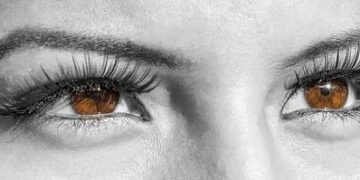In a significant leap forward for healthcare in Northeast Louisiana, St. Francis Medical Center has introduced cutting-edge robotic surgery technology, marking a new era of precision and innovation in patient care. This advancement not only enhances surgical accuracy but also promises quicker recoveries and improved outcomes for patients across the region. As St. Francis embraces this state-of-the-art equipment, the medical center is poised to redefine the standards of minimally invasive surgery, bringing world-class treatment options closer to home.
St. Francis Medical Center Elevates Patient Care with Cutting-Edge Robotic Surgery
St. Francis Medical Center is pioneering a new chapter in surgical care by integrating state-of-the-art robotic technology into its operating rooms. This advanced system empowers surgeons with unmatched precision, flexibility, and control-leading to significantly improved outcomes for patients. Procedures that once involved large incisions and lengthy recovery times can now be performed through minimally invasive techniques, reducing pain and accelerating healing. The surgical team’s blend of expertise and innovation positions the center as a beacon of modern medicine in Northeast Louisiana.
Patients benefiting from the robotic surgery program enjoy several distinct advantages, including:
- Smaller incisions and minimal scarring
- Lower risk of infection and complications
- Shorter hospital stays and faster return to daily life
- Enhanced precision in complex procedures
| Procedure | Average Surgery Time | Typical Recovery |
|---|---|---|
| Robotic Prostatectomy | 2 hours | 2 weeks |
| Hysterectomy | 1.5 hours | 1-2 weeks |
| Colorectal Surgery | 2.5 hours | 2-3 weeks |
Exploring the Benefits of Robotic Technology in Complex Surgical Procedures
Robotic technology in surgery has revolutionized the way complex procedures are performed, offering a blend of precision, control, and minimal invasiveness. Surgeons now have access to instruments that mimic human hand movements but with a greater range of motion and steadiness, enabling them to operate on delicate tissues with unmatched accuracy. This technology significantly reduces the risk of complications, shortens recovery times, and minimizes pain for patients, transforming the overall surgical experience. With enhanced 3D visualization and real-time feedback, surgeons can navigate challenging anatomy more confidently, even in cases that were once deemed too risky for minimally invasive approaches.
The benefits extend beyond the patient, impacting the entire surgical team and healthcare system. Some key advantages include:
- Smaller incisions resulting in reduced scarring
- Lower risk of infection and blood loss
- Shorter hospital stays, allowing faster return to daily activities
- Improved ergonomic comfort for surgeons, reducing fatigue
| Feature | Traditional Surgery | Robotic-Assisted Surgery |
|---|---|---|
| Incision Size | Large | Small |
| Recovery Time | 2-4 weeks | 1-2 weeks |
| Blood Loss | Moderate to High | Minimal |
| Risk of Infection | Higher | Lower |
| Surgeon Ergonomics | Less Comfortable | Enhanced Comfort |
Recommendations for Maximizing Outcomes with Advanced Robotic Systems
To achieve the full potential of advanced robotic systems, healthcare teams must prioritize comprehensive training and ongoing skill development. Surgeons and support staff should engage in simulation-based practice and collaborative workshops to enhance precision and efficiency. Equally important is fostering a culture of open communication, where feedback is actively encouraged, allowing for continuous refinement of surgical techniques and workflow optimization. Integrating multidisciplinary insights ensures that every procedure benefits from the latest best practices and patient-centered care strategies.
Key strategies for maximizing robotic system outcomes include:
- Regularly updating software and integrating system upgrades
- Developing tailored surgical plans using preoperative imaging data
- Implementing robust maintenance schedules to ensure system reliability
- Monitoring patient recovery closely with data-driven postoperative assessments
| Focus Area | Recommended Action | Impact |
|---|---|---|
| Training & Education | Simulation Labs & Workshops | Enhanced Surgical Precision |
| System Maintenance | Regular Diagnostics & Updates | Reduced Downtime |
| Patient Care | Customized Recovery Protocols | Accelerated Healing |
The Conclusion
As St. Francis Medical Center ushers in a new era of precision and care with its state-of-the-art robotic surgery technology, Northeast Louisiana stands poised to benefit from medical advancements once reserved for major metropolitan hubs. This integration of cutting-edge tools not only enhances surgical outcomes but also reaffirms the community’s commitment to accessible, innovative healthcare. As technology and compassion continue to intertwine, patients in the region can look forward to a future where healing is both an art and a high-tech science, right in their own backyard.





![The Surprising Studio Ghibli Film That Influenced Netflix’s Train Dreams [Exclusive] – Yahoo](https://earth-news.info/wp-content/uploads/2025/11/326397-the-surprising-studio-ghibli-film-that-influenced-netflixs-train-dreams-exclusive-yahoo-360x180.jpg)

























